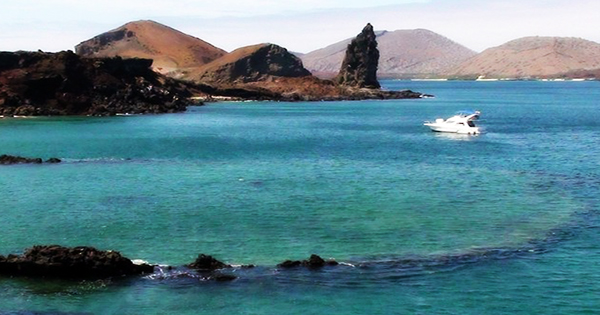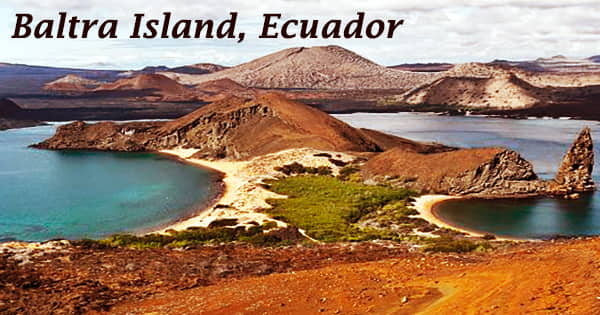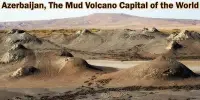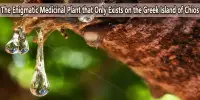With an area of 8 square miles (21 square km), Baltra Island (Spanish: Isla Baltra), sometimes known as South Seymour Island, is one of the smaller Galápagos Islands, Ecuador. It was formed by geological uplift; the island is exceedingly dry, with salt plants, prickly pear cactus, and palo santo trees being the only vegetation. It’s 600 miles (1,000 kilometers) west of Ecuador in the eastern Pacific Ocean. The island was once a part of Santa Cruz (Indefatigable) Island before volcanic faulting.
Ecuador allowed the United States to build an aviation base there during World War II (defunct since 1946). The true origin of the island’s name “Baltra” is uncertain. The Ecuadorean air force is in charge of the island, which has a small garrison of soldiers. Petrocommercial (a subsidiary of the state-owned oil corporation) operates a fuel store and a landing pier, which is where the majority of tourists embark their boats.
It is a tiny, flat island near the archipelago’s center that was produced by a succession of underwater lava uplifts that resulted in flat plateaus. Because “Baltra” is a Spanish surname (especially in Chile), it was most likely named after a person. The name appears in print for the first time in the British Admiralty’s South America Pilot in 1927; it was added after the 1915 edition, but the original document has been destroyed. Although the phrase predates the US base, it is commonly mistaken for an abbreviation used by the US military.

The Ecuadorian government rebuilt the airstrip as tourism grew, and it is now the principal point of entry for visitors to the islands. Baltra, unlike the majority of the Galapagos Islands, is not a volcanic remnant. It’s an uplifted island, a piece of land that was originally submerged before volcanic activity on adjacent Santa Cruz Island altered the undersea geology.
Baltra is flat instead of steep like other islands, and it is covered in rounded volcanic rocks known as “pillow lava” due to their soft appearance. They can only be found in the water. The major airport, Seymour Airport, is located here, therefore visitors to the Galapagos Archipelago typically start their journey here. All guests are taken by bus to one of two ports when they arrive in Baltra. The first port is in a tiny harbor where guests may board Galápagos cruise vessels. The second is a ferry terminal that connects Baltra to Santa Cruz Island via the Itabaca Channel.
The island is 27 square kilometers in size. Baltra is now outside of the Galapagos National Park’s borders. On the island of Galapagos, the Galapagos Land Iguana is being actively reintroduced. Baltra was built as a United States Army Air Force airfield during WWII. Crews stationed at Baltra kept an eye out for hostile submarines in the eastern Pacific and guarded the Panama Canal. The US handed up the base to the Ecuadorian government after the end of the war, which offered one of the buildings to each head of the family in Galapagos.
On both Santa Cruz and San Cristóbal, several methodically dismantled their buildings to provide building materials for their own residences. The base was used to build Ecuador’s own airfield in Galapagos, with the first commercial flights arriving in 1963. The island is still used as an official Ecuadorian military facility today, including bases for the Navy and the Air Force. Baltra’s land iguanas have a fascinating history.
Scientists decided to relocate several Baltra iguanas to North Seymour Island in 1932 to investigate how they would survive. They did really well, which was good. Baltra iguanas were extinct during the conflict, but some survivors from North Seymour were raised and reintroduced to Baltra in 1991. According to the most current research, the island now has a flourishing population of around 400 iguanas, which may occasionally be seen strolling near the airport.
Baltra is now outside of the Galápagos National Park’s borders. On the island of Baltra, the Galápagos land iguana is being actively reintroduced after becoming extinct in 1954. Baltra is desert, with saltbush, prickly pear cactus, and Palo Santo trees dominating the landscape. A great variety of birds, including boobies and frigate-birds, may be seen.
On Baltra, there are no visiting sites. Visitors can explore North Seymour, Mosquera, and Daphne Major, which are all neighboring islands. There are also five marine sites in the area of North Seymour and Daphne Major and Minor.
Baltra, despite its fascinating history, has nothing to offer visitors. Inside the airport and across the dusty street are several souvenir shops, but the military base is restricted to tourists. Captain G. Allan Hancock, however, had translocated a colony of Galápagos land iguanas from Baltra to North Seymour Island, a tiny island a few hundred meters north of Baltra, in the early 1930s.
Most flights into and out of the Galapagos are from Baltra Airport. Each year, about 2,000 commercial aircraft arrive in Galapagos, with roughly two-thirds landing at Baltra. In most cases, visitors arrive at the airport and are whisked away to boats and buses that will transport them to Puerto Ayora on adjacent Santa Cruz Island. Because there isn’t much to see on the island, there are no real visitor sites.
















